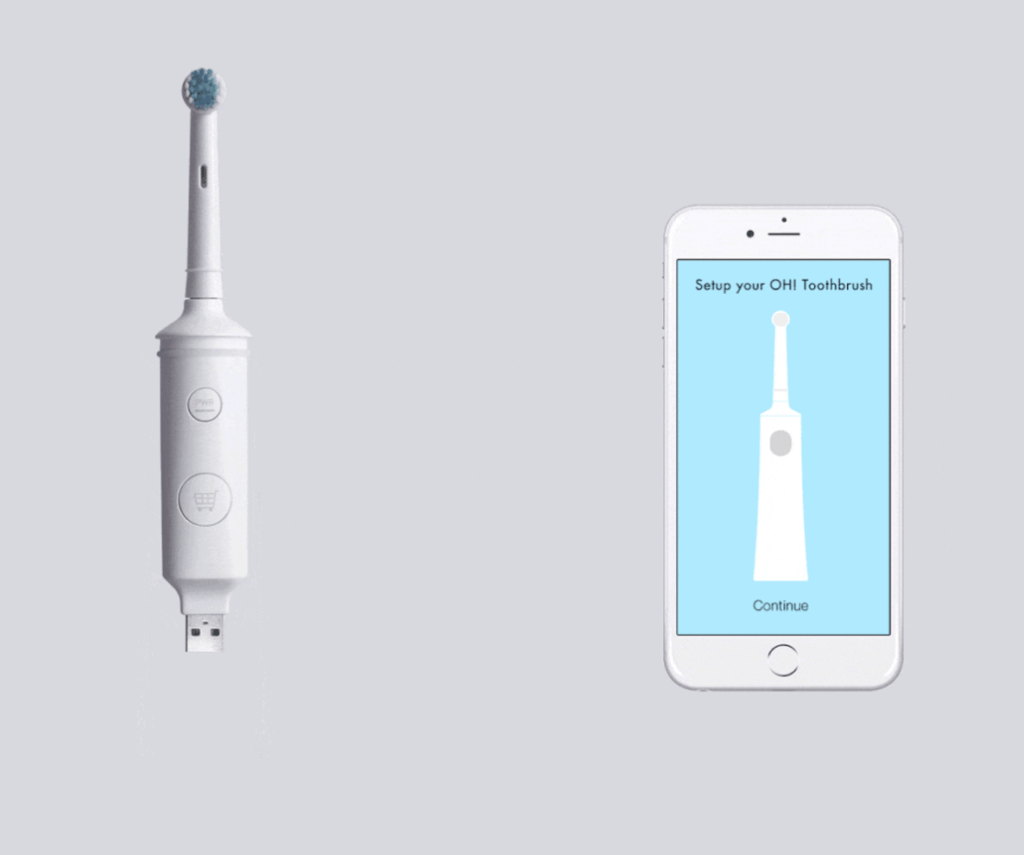What is Design Thinking?
According to Thomas Lockwood, Ex-President of Design Management Institute, it is a process of “applying a designer’s sensibility and methods to problem solving”. Think big, think innovative, think outside the box.
Albeit gaining popularity as both a product and business strategy in recent years, the research and practice of design thinking has been around for a long time. There are many available definitions and frameworks in the existing design thinking literature, so for starters, this article will be covering its more common principles and process framework.
“Design thinking encourages organizations to focus on the people they’re creating for, which leads to better products, services, and internal processes.” (Source: ideou.com). At its crux, design thinking embraces a human-centered approach that seeks to understand its audience, and thus design innovative products and services to solve the problems/needs identified. Another important thing about design thinking is that it allows you to focus on the solution rather than the problem itself. Given the rigorous process of collaborating, ideating and rapid prototyping, you will find that design thinking is a largely solution-oriented approach that has a thirst to find the next best way of solving the problem at hand, no matter how radical it may be — which often results in new and innovative products being birthed forth. On a larger scale, design thinking isn’t just limited to the scope of new product developments, but can also influence entire business processes, corporate culture, and even drive social change.
Why is Design Thinking so Important?
Consumers now have quick and unlimited access to global marketplaces. With technology on the rise and already being integrated into our daily lives, the line between physical and digital experiences is increasingly blurred, causing businesses and brands to struggle in coming up with new, innovative and unique products, services and experiences that sets them apart from competitors.
This is where design thinking comes into play. By cultivating a design-driven culture, this helps to put your customers front and center. When thinking about creating the perfect user experience, businesses must always remember the real people who will be on the receiving end, experiencing their products and services. So the perception embraced by businesses today have to change from that of viewing users as just another figure on the sales chart, to recognising that just like you and me, they are human beings too — with feelings, values, preferences, and behaviors. This brings us to the first and important step of design thinking — conducting a deep dive into understanding the unmet needs of your users. Doing so will help you to come up with innovative products and services that can meet those needs, and ultimately give you an advantage over your competitors. However, such an organisational culture is not built by simply restraining design to its traditional function or limiting it to a single department. The art of design thinking thrives on multi-disciplinary team collaboration — this means across departments and disciplines. Such an approach encourages innovativeness and creativity in every single product or project that design thinking is applied to.
Let’s see how Netflix was able to use the design thinking approach to reinvent and drive itself ahead of the entertainment and streaming industry. Back in the earlier days, Netflix was actually a service that delivered movies to customers through the mail. It was not until cable companies started to offer movies-on-demand when they started to adapt and change because, who would wait for several days to watch a movie if they could simply stream it anytime online?

With the help of design thinking, Netflix started to think outside the box and evolved into an entertainment streaming platform that upped its game against those cable companies. Artificial intelligence was also used to suggest movies for each user based on their interests and viewing habits.
In more recent years, something that has also made Netflix stand out, is its originality. With its accumulated knowledge of customer preferences and behaviors, Netflix understood what its customers valued and thus, endeavoured to break out from the norm by starting to create their own content, original movies, and series. Shows like Stranger Things, Black Mirror, and The Umbrella Academy became an instant hit with Netflixsubscribers, and people loved the originality. Furthermore, shows like Black Mirror also gave users the freedom to choose their preferred storylines when watching. Netflix wanted to make the experience both interactive and personalized and if this was a tactic to solidify their customer’s interest in Netflix, they definitely did that right.
This is the power of design thinking. Netflix took note of the kind of experience that each of its users wanted, and then made it a reality.
The Design Thinking Approach
Proposed by the Hasso-Plattner Institute of Design at Stanford, these are the four principles and five phases of Design Thinking (Source: careerfoundry.com).
Principle #1 – The Human Rule
In all things, always consider the human perspective. Any design or social innovation should always trace back to the human-centric point of view.
Principle #2 – The Ambiguity Rule
To be able to see things differently, you need to experiment at the limits of your knowledge. Approach the problem with an open mind, and don’t be quick to shoot down ideas during a brainstorming session.
Principle #3 – The Redesign Rule
Even though society and technology evolves over time, your customers’ basic human needs will remain unchanged. That is why innovating and redesigning is essential in meeting those needs in a way that is relevant to the times.
Principle #4 – The Tangibility Rule
Try to translate those ideas into something tangible, whether in the form of prototypes or mock-up designs, because this can effectively help to convey your ideas to others and test them with users.
Understanding these principles of design thinking will then help you to better implement its process and solve-problems innovatively. In this next section, we will touch on the 5 phases of the design thinking process.

Phase 1: Empathise
First things first, get to know your user and understand their (unarticulated) needs. Thomas Lockwood writes in his book on Design Thinking that, “the problem with listening to customers is that when companies ask customers what they like, customers are sure to answer by naming products and services that already exist. This form of research is really just being an order taker, not an innovator. Instead, we need to develop a deep empathy and understanding of customers that will better discover their unarticulated needs. Coming to an understanding of what customers value is far more beneficial than asking them what they want.” In other words, start with why not what. Why are they or are they not using your products or services? Observe and engage on a personal level to help you better empathise with them — walk around in their shoes, conduct mystery shopping experiences and ethnographic research. It is time to put aside your assumptions and dive into a more in-depth understanding of your end users.
Phase 2: Define
You can’t find a solution before first defining the problem. With the results from phase one, now is the time to analyse, understand and interpret it. Spot any behavioral patterns? What problems or difficulties do your customers face? This is where you form a problem statement, and remember to phrase it in a user-centered way.
Phase 3: Ideate
After getting a better understanding of your problem statement, let’s start to ideate some solutions. This is where creativity has no boundaries, and anything is possible. Don’t worry about feasibility yet; this involves multi-disciplinary teams comprising of people from different departments (and sometimes with customers/co-creators even), sitting down together to throw out ideas. This stage has to be free of judgment which is very crucial in encouraging innovation and creativity, and allowing only the best solutions to grow. After generating tons of ideas, start to filter and narrow them down to those that you can actually visualise happening, and more importantly, those that effectively meet the needs of your customers, in a way that is aligned with your brand values.
Phase 4: Prototype
Now that we have several ideas, this phase is all about experimenting and making them work. This puts every solution that we have identified from earlier phases to the test by creating prototypes or mock-up versions of the product. This, coupled with phase 5, is an iterative process until the team arrives at the best possible solution, or in other words, the final product. One of Pixar’s ten core operating principles is to “fail quickly” so that they can move on to the best solutions as soon as possible. The key to this phase of rapid prototyping is to be unafraid to fail — and fail quickly — so as to quickly identify areas of improvement and shorten this time-to-market.
Phase 5: User testing
After creating the prototype, testing it with real users is important. This is to discover any possible flaws that had not come up in the first four phases, and see how a user behaves when interacting with your product. Based on the results garnered from user-testing, it is completely normal to go back a few steps to redesign and improve on your product, eventually coming up with the final version after a couple of iterative cycles.
4 Benefits of Design Thinking
Design thinking is very helpful in the development of products, services and systems. It follows a streamlined process which is easy to understand, good in surfacing possible flaws so that improvements can be made, and effective in encouraging innovative solutions.
1. A different perspective
Design thinking gives you opportunities to look at problems from a different perspective, because the process often involves getting you to see and work through a set of creative lenses. With its audience deep-dive, brainstorming sessions and user testing, these can help you to expand both your imagination and understanding. People learn the most through experience, and the collaboration you engage in when brainstorming, as well as the feedback you get through user testing, can really help to open up your mind and change your perspective toward certain issues. Besides, having a fresh take never hurt anyone.
2. Helps you settle on only the best ideas
With clearly defined goals and a deep understanding of your audience, design thinking can also help you to effectively meet your client’s expectations and requirements. Through prototyping and going through multiple rounds of user testing, this gives your clients a better idea of how their product will function and look, and how customers will interact with it. From here, working together to fine-tune the product will be much easier.
One brand that truly exemplified design thinking in action was Braun/Oral-B and its Smart Brush. With the aim of creating a smarter electronic toothbrush, the initial ideas presented included features like the ability to play music or track people’s brushing performance. However, evident in these ideas was the fact that the customer experience had not been fully thought out. These ideas focused on additional features that made the product “smart”, without actually focusing on smart ways to improve the core function of the toothbrush. Instead, these ideas felt more suitable for an activity tracker that people use while exercising, rather than for a toothbrush.

Thus, as users themselves, these key issues were highlighted by the team, and in the end, the idea changed to that of creating a chargeable toothbrush with replaceable brushes (Image: futurefacility.co.uk). This in turn, made the use of the smart toothbrush more purposeful and convenient, solving common every-day frustrations that people had. Can you imagine if they had settled on the music-playing toothbrush? Despite being a novel idea, it would have probably flopped given the pragmatic mentality of users, “It’s cool, but I don’t need a music-playing toothbrush that blasts repetitive and annoying tunes in the morning”. It is good to be innovative, yes, but it is also important to have purpose. From Braun/Oral-B’s case study, we can learn that the best products solve real problems/frustrations, and this can only be done by placing the customer first.
3. Improves customer retention
When design thinking is done right, it is natural that an improvement in customer retention and loyalty will follow. This is because being a user-centered approach, everything in this process contributes to making sure that the customer gets only the best possible experience, and as we know it — a great brand experience leads to brand loyalty.
Another well-known brand that benefits greatly from design thinking is Airbnb. When they first started, they were barely surviving as a startup. Design thinking was the miracle tool that helped them transform into the successful business they are today (Image: fabrikbrands.com).

Initially, Airbnb was having a hard time getting sales and bookings. In fact, the business was not growing at all and had remained stagnant. Looking at their site, they soon realised that the quality of their visuals mattered, because customers would probably never buy or book anything they can’t see or have a full picture of. Although a small change, it was definitely the right move. A small group of them immediately flew to New York and changed all the amateur-looking photos to high-resolution and high-impact ones. This was not something that they had planned beforehand or found based on customer research. They simply decided to trust their intuition and went with it.
Sometimes, research, data and coding cannot compare with elements of our human touch like intuition or our gut feeling. However, by always keeping the customer experience a priority, this has allowed Airbnb to build the loyal and international customer base that it has today.
4. Benefits more than just ‘designers’
Lastly, design thinking also serves as an amazing tool for those who are not professionally trained as designers, to help question and solve problems like designers do. It allows us to start thinking like designers – to explore new ways of improving a product or process, or to come up with radically new products and ideas. In the end, design thinking helps us to come up with user-centered products that meet needs, solve problems and as a result, sell themselves.
To sum it up, in all the above mentioned examples, the common thread was that the brands were always making sure that their customers would have the best experience. We need to start seeing that the products and services we develop, have to be meaningful to the users, and coherent with their environments.
Don’t be afraid to think outside the box, design thinking is not meant to be rigid. It is about asking the right questions and challenging assumptions. Why? Because this helps you to discover new ways in improving products, services, or experiences, and this can often lead to innovative ideas that you never would have thought you could come up with. Looking to come up with the next innovative solution, or to build a culture of design thinking in your organization? Come speak with us!
— —
Hero image: Thibault Penin, Unsplash
